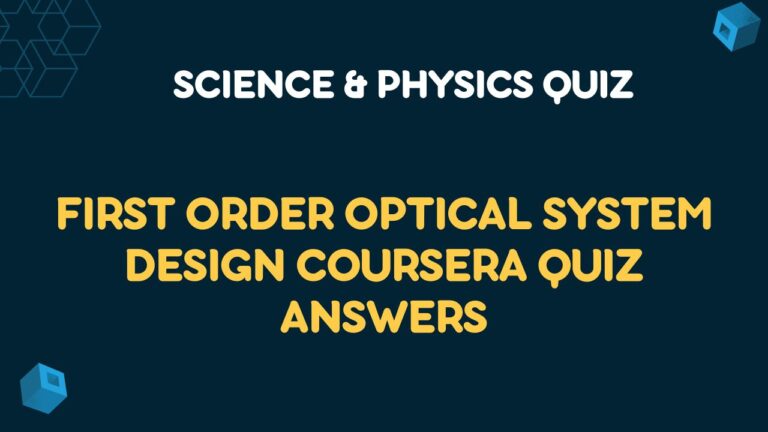Table of Contents
All Weeks Interfacing with the Raspberry Pi Coursera Quiz Answers
Interfacing with the Raspberry Pi Week 01 Quiz Answers
Q3. When an ssh client is invoked at the command line with the “ssh” command, what other argument must be provided on the command line?
Q4. What command will reveal the IP address of your Raspberry Pi?
Q5. What is a fair definition of the term “protocol”?
Q6. What does an IP address uniquely identify?
Q7. How big is a port TCP/UDP number?
Q8. The nslookup command will show the IP address corresponding to a given domain name.¶
- True
Interfacing with the Raspberry Pi Week 02 Quiz Answers
Q1. What is the difference between clients and servers on the Internet?
Q2. What Python function is used to perform a DNS lookup?
Q3. What Python function is used by the client to establish a connection between sockets?
Q4. The recv() function performs a non-blocking wait, by default.
Q5. When is the code inside an except clause executed?
Q6. Binding a socket on the server-side requires what information?
Q8. Sockets can be used to communicate between two Raspberry Pis.
- True
Interfacing with the Raspberry Pi Week 03 Quiz Answers
Q1. What is a fair definition of an API?
Q2. What is a good reason to use an SDK rather than directly using an API?
Q4. In the Twython library, what function sends a tweet?
Q5. In the Twython library, what function is used to detect tweets in a stream that contain a given string?
Q6. What is the name of the callback function that is invoked when a tweet that contains a selected string is found in a stream?
Q7. The TwythonStreamer class defines the callback function which is invoked when a tweet containing a given string is found in a stream.
Q8. An SDK is never absolutely necessary because the Socket library can always be used to perform network communication.¶
- True
Interfacing with the Raspberry Pi Week 04 Quiz Answers
Q1. What is the name of the Python package used to control the Raspberry Pi camera module?
Q2. What function in the camera library is used to take a picture?
Q4. Why is pulse width modulation useful?
Q5. How many input wires does a servo have?
Q6. Why is it common to use an external power supply to drive a servo?
Q7. The CSI camera interface of the Raspberry Pi needs to be activated before using the camera module.
Q8. The speed of a servo motor is easily controlled.
- False
<< Previous Quiz Answers
The Raspberry Pi Platform and Python Programming for the Raspberry Pi
All Quiz Answers of An Introduction to Programming the Internet of Things (IoT) Specialization Course
Course 1: Introduction to the Internet of Things and Embedded Systems
Course 2: The Arduino Platform and C Programming
Course 3: Interfacing with the Arduino
Course 4: The Raspberry Pi Platform and Python Programming for the Raspberry Pi
Course 5: Interfacing with the Raspberry Pi

